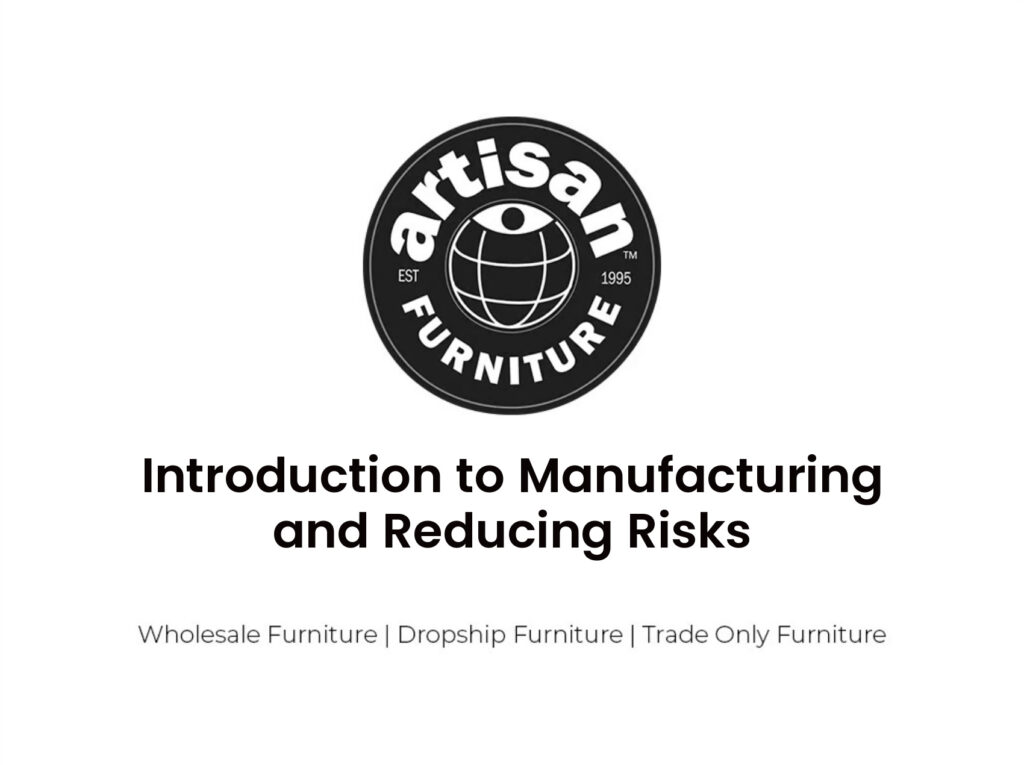Introduction to Manufacturing and Reducing Risks
Manufacturing plays a vital role in the economy, comprising 15% of the US economic output. This process involves converting raw materials into finished goods, using machines, robots, computers, and human labor. Manufacturers can sell their products directly to consumers, other manufacturers, distributors, or wholesalers. To reduce risks in manufacturing, businesses should focus on controlling production costs, ensuring quality, managing sales effectively, adjusting production levels based on demand, and continuously improving manufacturing processes. In this article, we will explore the fundamentals of manufacturing and strategies for risk reduction.
Table of Contents
ToggleThe Importance of Manufacturing in the Economy
Manufacturing plays a vital role in the economy as it represents 15% of the economic output in the US. It contributes significantly to job creation, technological advancements, and overall economic growth. The manufacturing sector serves as a foundation for various industries, such as automobiles, aerospace, machinery, and telecommunications. It converts raw materials, parts, and components into finished goods that can be sold to consumers, other manufacturers, or wholesalers. This process not only generates revenue but also stimulates other sectors of the economy. Manufacturing businesses employ a combination of manual labor and machines, utilizing assembly lines to efficiently produce goods. The success of manufacturing is crucial for a thriving economy, as it drives innovation, fosters competition, and provides opportunities for economic prosperity.
Key Concepts in the Manufacturing Process
The key concepts in the manufacturing process involve converting raw materials into finished products. This process is essential for the production and sale of goods. Manufacturers use various methods, such as assembling parts or components, to create the final product. They rely on machines, robots, computers, and human labor to complete the manufacturing process efficiently. Assembly lines are commonly used to streamline production and ensure consistent quality. Once the finished products are ready, manufacturers can sell them directly to consumers, other manufacturers, or wholesalers. The goal is to meet consumer demand while minimizing costs and maximizing profits. By understanding these key concepts and implementing effective strategies, manufacturers can successfully navigate the manufacturing process and achieve their business objectives.
Understanding the Role of Manufacturing Businesses
Understanding the role of manufacturing businesses is crucial for gaining insight into their contribution to the economy and the distribution of goods. Here are four key points to consider:
-
Job Creation: Manufacturing businesses play a significant role in providing employment opportunities. They create jobs not only within their own facilities but also in related industries such as transportation, logistics, and supply chain management.
-
Economic Growth: Manufacturing businesses contribute to the overall economic growth of a country. They generate revenue, stimulate innovation, and attract investments. Additionally, manufacturing exports can boost a nation’s trade balance and strengthen its position in the global economy.
-
Product Availability: Manufacturing businesses are responsible for producing a wide range of goods that are essential for everyday life. From consumer electronics to automobiles, they ensure that products are available in the market for consumers to purchase.
-
Technological Advancements: Manufacturing businesses drive technological advancements by investing in research and development. They constantly seek ways to improve production processes, efficiency, and product quality, leading to innovation and progress in various industries.
Differentiating Manufacturers and Wholesalers
Wholesalers act as intermediaries between manufacturers and retailers or end consumers. They play a crucial role in the distribution process by buying products in bulk from manufacturers and then selling them in smaller quantities to retailers or consumers. Unlike manufacturers, whose main focus is on production, wholesalers focus on the distribution of goods. They facilitate the availability of products in the market and ensure that they reach the intended target audience. By purchasing products in large quantities, wholesalers are able to negotiate better prices with manufacturers, making it more cost-effective for retailers and end consumers to purchase from them. Wholesalers also provide an essential service by offering a wide range of products from different manufacturers, giving retailers and consumers more options to choose from.
Exploring Different Types of Manufacturing Production
Exploring the different types of manufacturing production, manufacturers use make-to-stock, make-to-order, and make-to-assemble approaches to meet customer demand.
-
Make-to-Stock (MTS) relies on past sales data to forecast consumer demand and plan production. This approach involves producing goods in large quantities and stocking them in anticipation of customer orders. It allows for quick delivery of products but carries the risk of excess inventory.
-
Make-to-Order (MTO) allows customers to order customized products manufactured to their specifications. This approach minimizes the risk of excess inventory as products are only produced when there is a confirmed customer order. However, it may lead to longer lead times and higher production costs.
-
Make-to-Assemble (MTA) stocks basic components and assembles them after receiving orders. This hybrid approach combines the advantages of MTS and MTO, reducing inventory risk while still allowing for customization. It requires efficient coordination between component suppliers and assembly processes.
Risks and Challenges in Manufacturing
To mitigate challenges in manufacturing, companies must continuously improve efficiency and effectiveness in their production processes. This is crucial because the manufacturing industry faces various risks and challenges that can impact productivity and profitability. One major challenge is the unpredictability of consumer demand, which can lead to excess inventory or not meeting customer needs. Furthermore, manufacturers must also navigate the complexities of supply chain management, ensuring that raw materials and components are available when needed. Additionally, quality control is essential to maintain customer satisfaction and prevent costly recalls or rework. By implementing strategies to enhance efficiency, such as lean manufacturing principles or automation technologies, companies can optimize their production processes and better adapt to market fluctuations. Regular assessment and adjustment of production levels based on demand data is also key in reducing risks and maximizing operational performance.
Cost Management Strategies in Manufacturing
One effective strategy in manufacturing is implementing cost management techniques to optimize operational expenses and increase profitability. Here are four cost management strategies that manufacturers can consider:
-
Streamlining the Supply Chain: By identifying and eliminating inefficiencies in the supply chain, manufacturers can reduce costs associated with transportation, inventory management, and supplier relationships.
-
Lean Manufacturing: This approach focuses on minimizing waste and improving efficiency in the production process. By eliminating unnecessary steps, reducing defects, and optimizing resources, manufacturers can reduce costs while maintaining quality.
-
Implementing Advanced Technologies: Automation, robotics, and artificial intelligence can help manufacturers streamline operations, reduce labor costs, and enhance productivity. Investing in technology can lead to long-term cost savings and improved competitiveness.
-
Energy Efficiency: Adopting energy-saving practices and utilizing energy-efficient equipment can significantly reduce utility bills and environmental impact. Manufacturers can explore renewable energy sources, implement energy management systems, and optimize energy usage to lower costs.
Quality Control and Customer Satisfaction
Implementing effective quality control measures ensures that manufacturers meet customer satisfaction by delivering products that meet or exceed their expectations. Quality control is a crucial aspect of the manufacturing process as it helps identify and rectify any issues or defects in the products before they reach the customers. By conducting thorough inspections and tests at various stages of production, manufacturers can ensure that their products are of high quality, reliable, and safe to use. This not only enhances customer satisfaction but also helps build a strong reputation for the manufacturer in the market. Moreover, effective quality control measures also contribute to reducing the risk of product recalls, returns, and negative feedback, ultimately leading to improved customer loyalty and increased sales.
Maximizing Revenue Through Effective Sales Management
Effective sales management plays a crucial role in maximizing revenue for manufacturers by ensuring efficient and successful selling of their products. Here are four ways in which effective sales management can help manufacturers increase revenue:
-
Targeted Marketing: Sales managers can analyze market trends and customer preferences to develop targeted marketing strategies. By identifying the right target audience and tailoring marketing efforts accordingly, manufacturers can increase the chances of generating sales and driving revenue.
-
Sales Team Training: Sales managers can provide training and guidance to their sales teams, equipping them with the necessary skills and knowledge to effectively sell products. Well-trained sales teams are more likely to close deals and generate revenue for the manufacturer.
-
Customer Relationship Management: Effective sales management involves building and maintaining strong relationships with customers. By understanding their needs and preferences, manufacturers can provide personalized solutions and improve customer satisfaction, leading to repeat business and increased revenue.
-
Pricing and Negotiation: Sales managers play a crucial role in setting competitive pricing strategies and negotiating deals with customers. By finding the right balance between profitability and customer value, manufacturers can maximize revenue and maintain healthy profit margins.
Continuous Improvement in Manufacturing Processes
Continuous improvement in manufacturing processes involves regularly assessing and adjusting production levels based on demand. By constantly evaluating customer needs and market trends, manufacturers can optimize their operations to meet changing demands efficiently. This includes analyzing sales data, monitoring inventory levels, and collaborating with suppliers to ensure a smooth flow of materials. With a proactive approach to production planning, manufacturers can minimize the risk of excess inventory or stockouts, reducing costs and improving customer satisfaction. Additionally, implementing lean manufacturing principles, such as eliminating waste and streamlining workflows, can further enhance efficiency and productivity. Through continuous improvement efforts, manufacturers can stay competitive in the dynamic market, deliver high-quality products on time, and meet customer expectations effectively.



